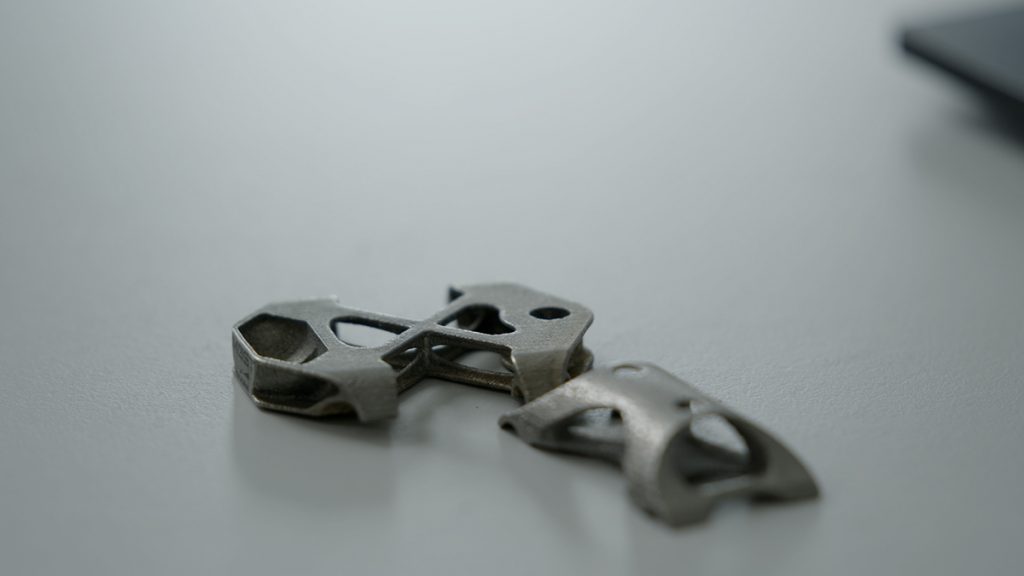Bringing it all together: How Materialise is integrating manufacturing and software expertise to shape AM’s future
In an industry that sees a constant influx of new players hoping to forge a place for themselves in a brave new manufacturing landscape, there are only a few companies which have been on the AM scene since its earliest days, whilst remaining at the top of their game. One of these is Materialise, an AM company that has benefitted from leveraging its dual specialisms of AM parts production and AM software development. Metal AM magazine's Emily-Jo Hopson-VandenBos talked to Materialise's Ingo Uckelmann and reports how, now more than ever, the bringing together of manufacturing and software expertise is the future for AM. [First published in Metal AM Vol. 7 No. 2, Summer 2021 | 20 minute read | View on Issuu | Download PDF]

Materialise NV, Leuven, Belgium, is one of the most recognised names in Additive Manufacturing, and a powerhouse for both software development and part manufacturing. Now, as production volumes increase and AM approaches widespread industrial adoption, the company is expanding its production capabilities and capacity, and maximising the opportunities offered by the dual roles it holds in the AM industry.
The company recently announced the completion of its new 3,500 m² Metal Competence Center for Additive Manufacturing in Bremen, Germany. This expansion was undertaken under the guidance of Ingo Uckelmann, Materialise’s Technical Manager Metal 3D Printing. Uckelmann joined the world of metal Additive Manufacturing early on in the technology’s history, working with one of the first metal AM machines at Fraunhofer ILT in 2000: an extremely slow Powder Bed Laser Beam Fusion (PBF-LB) machine with a single 120 W laser. Now, machine makers regularly launch PBF-LB machines with multiple lasers and an ever-increasing build volume, with one recently-launched machine having twelve lasers of 1 kW each. Following the announcement of Materialise’s new Metal Competence Center in May 2021, with many parts of the world still in varying degrees of lockdown, I spoke to Uckelmann about how far the world of metal AM has come during his twenty years in the industry, the lessons Materialise has learnt along the way and his predictions for the next twenty years in metal AM.
One of the most significant developments Uckelmann highlighted from his time in the industry was not the size and speed of machines, or the ever-growing number of applications, but the underlying technology that helps make this growth possible. “Looking back at metal AM’s advancements since 2000, one of the most important developments has been in the process automation we have achieved,” he reflected. “Twenty years ago, everything was done manually in CAD programs, from data handling to design and print preparation. Now, much of the process has been automated through AM software.”
“Aspects of build planning like support generation and optimising orientation for metal AM have been automated, which reduces the manual inputs required,” he observed. “The 3D printing industry is experiencing a similar revolution to that of 2D printing, and we, eventually, will see this continue to the point where a technical drawing can be uploaded and printed with an almost entirely automated process. Throughout our thirty-plus year history, Materialise has been a market leader in this increasing automation, with our Magics 3D Print Suite providing many automated tools.”
As the AM industry continues to develop and scale to volume production, automation will continue to be key, Uckelmann stated. “This is a case of history repeating itself, as all of today’s widely-used manufacturing methods have gone through the process of increasing automation. Today, we are able to run the process smoothly, but post-processing and data structure is still manual. There is still a gap to fill in terms of automation before metal AM can truly work alongside traditional manufacturing in serial production.”
Acquisition and expansion
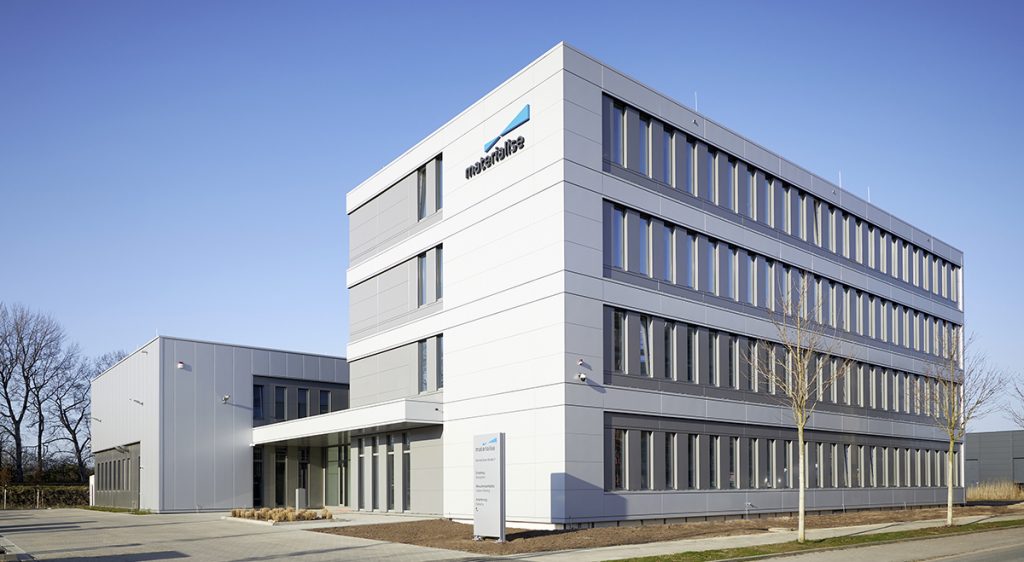
Materialise hopes to expand its expertise yet further in this area through the planned acquisition of Link3D Inc, the additive workflow and manufacturing execution systems (MES) company which it has acquired the option to purchase by the end of 2021. “With the acquisition of Link3D, we expect to continue our leadership in automation and take AM to its next level,” Uckelmann said. “With Link3D’s additive workflow and manufacturing execution systems seamlessly integrated with Magics, we are helping customers gain even more control of their manufacturing processes and scale AM capabilities to volume production. This combined software suite will reduce complexity in serial AM, helping the technology play a greater role in a connected, industrial manufacturing process.”
Within its new Metal Competence Center, the company has further plans in place to advance automation within its production workflow for metal AM. “We recently announced the Process Tuner as part of our product portfolio, which was initially developed in the Metal Competence Center,” Uckelmann explained. “This gives our customers the possibility to develop new process parameters that are more efficient. In one of our current proof of concepts, we found that the Process Tuner can lead to a decrease in manual efforts and a more standardised product result, while minimising printing costs, which is a triple win for me.”
On a smaller scale, the metal AM industry has seen significant evolution in the six years since the establishment of Materialise’s first Metal Competence Center. For Uckelmann, the market’s evolution during this period has, in many ways, tracked with Materialise’s expectations. “We have seen increasing part sizes, broader applications and an increased interest in using metal AM for production parts. While many of the applications we see today are still for the production of small, unique or expensive parts, we’re seeing new interest in the technology for a variety of applications in industries such as energy, automotive, aerospace, and general manufacturing. It’s unbelievable the number and variety of applications that AM is being used for today compared to even ten years ago.”
A renewed focused on integration and collaboration
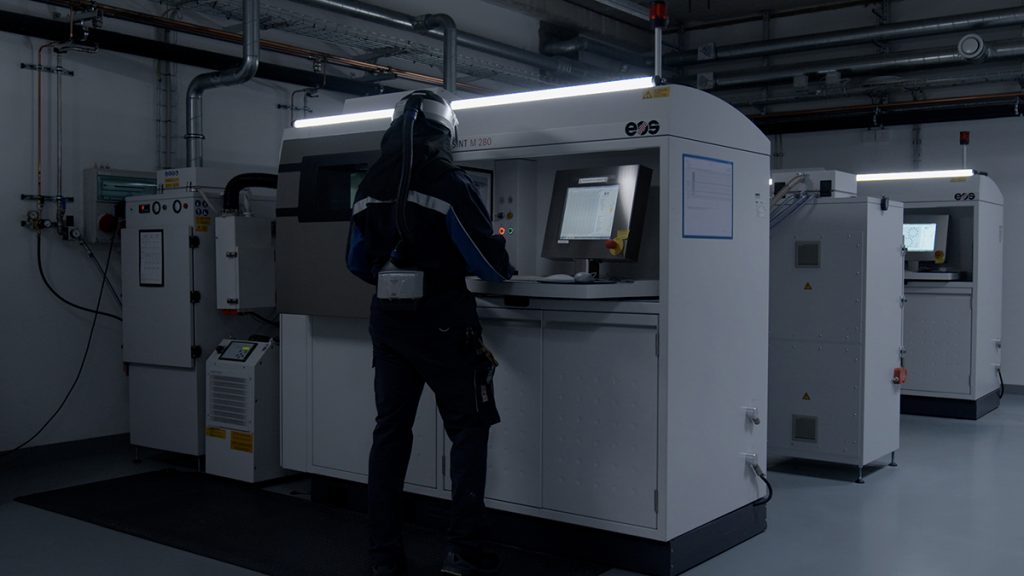
Of course, some recent developments could not have been foreseen by even the most talented industry forecaster. “One development that we could not predict was the impact of the COVID-19 pandemic on the metal industry as a whole,” Uckelmann stated. “While the industry was affected, the pandemic also created increased interest in AM as a complement to traditional manufacturing. As companies are working to address vulnerabilities in the global supply chain that were brought to light in the past year, AM technology has played a vital role in adding more localised and personalised production capabilities, a trend that we expect to continue in the post-pandemic world.”
Are there lessons which the company has learnt, as a metal AM service provider, over the last six years? The key lesson, according to Uckelmann, has been the importance of integration between Materialise’s software and manufacturing teams. While some people may expect the benefits of this relationship to flow exclusively from software to manufacturing, Uckelmann finds that both teams benefit from the opportunity to collaborate. “Over the last six years, we have learned the value of collaboration between software developers and production teams,” he explained. “Each of these teams brings their unique perspective and expertise to address the key challenges of metal AM.”
“With further integration at the new Metal Competence Center, we are already seeing the benefits in advancing our technology and overall processes,” he noted. “Throughout the AM process, we have focused our efforts on automation, ease of use and ensuring parts are built right the first time to save cost and waste.”
Collaboration at its Metal Competence Center extends beyond simply integrating its manufacturing and software teams; the value of collaboration is one of the reasons that in 2015 Materialise selected Bremen as the home for its metal AM facilities. “The Bremen area has certainly become a central hub of AM expertise,” Uckelmann stated. “Since 2015, we have closely worked with institutions here. We have collaborated with the University of Bremen on several projects and often recruit University of Bremen students to work on our teams. Second, working with the companies in the region that employ AM offers additional opportunities to share knowledge and develop new applications for AM.”
In the business of advancing AM technology
This attitude to collaboration extends to a somewhat unusual facet of Materialise’s business: its position as a provider of software to customers who may be seen as competitors in the metal AM part production space. I asked Uckelmann how this relationship works, and whether Materialise sees other metal AM part producers as competitors or colleagues. The answer was clear: Materialise is in the business of advancing Additive Manufacturing technology, not a race to the top. “At this point, we believe the industry is all on the same page in terms of developing and advancing AM technology,” he commented. “AM is still in its early stages when compared with traditional manufacturing processes, and collaboration is essential to continuing its advancement as a tool for serial production.”
“This includes not only collaborating within our Materialise teams, but with customers and others in the industry who are focused on material or machine development,” he explained. “We see ourselves more as enabler for companies that want to enter the AM market and add metal AM as complementary technology to existing classical manufacturing to employ new possibilities.”
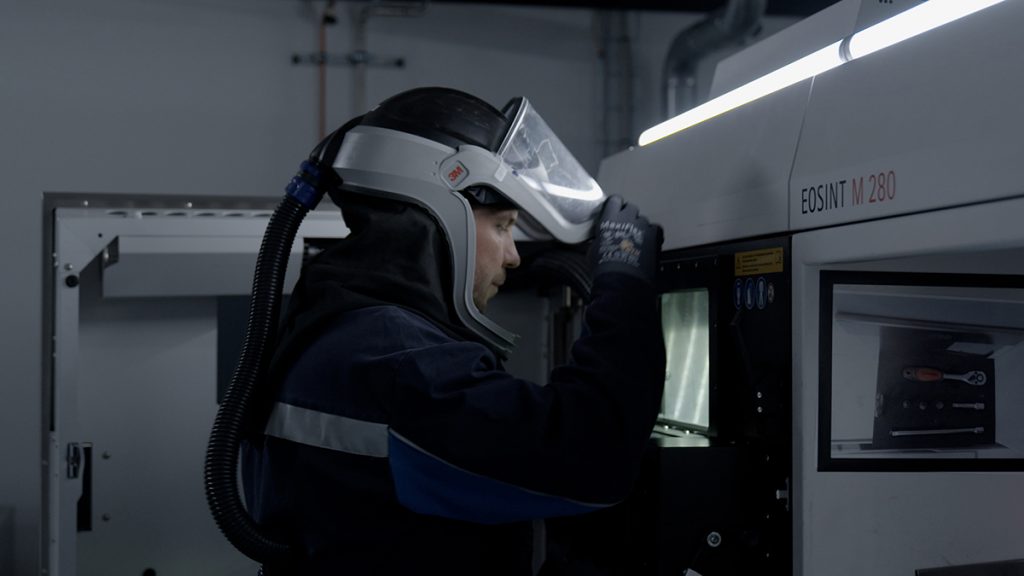
So, with twenty years of experience in the AM industry, many with one of the AM industry’s biggest players, what does Uckelmann expect to see in the next twenty years of metal Additive Manufacturing? For him, the future holds a significant increase in the accessibility of metal Additive Manufacturing to the wider industrial landscape. “The prices of metal printed parts have reduced drastically during the last twenty years,” he noted. “When I started with AM in the dental industry, it was the ideal market, because the parts are small, unique and expensive to produce with traditional methods. Today, more and more industries actively employ 3D printing, not only for prototypes and small series, but also for industrial production. In one case, we are working with a bicycle company to produce parts that are twenty-five times heavier and are manufactured in series more than 10,000 times greater than those of dental applications,” he explained. “We have done this all at a lower cost than that of producing a dental crown twenty years ago. Over the next twenty years, we expect this trend to continue with increased interest in metal 3D printing.”
In terms of metal AM’s key applications, Uckelmann sees expansion on the horizon – and believes Materialise is the company to facilitate it. “We will definitely see prominent series applications in aerospace and automotive applications, among others. We believe our Mindware consultancy team will be instrumental in creating new applications for series production, by working with customers to share expertise on both the 3D printing process and the end parts to find the applications where AM can truly add value.”
The drivers behind the new Metal Competence Center
This newest addition to Materialise’s AM portfolio is the result of an approximately €7.5 million investment, and, by uniting the formerly-separate software and manufacturing teams already based in Bremen, the company believes that it will be better situated to enact the increased collaboration necessary to better serve its global industrial customers.
Uckelmann explained that the new centre reflects the company’s expanded focus on metal Additive Manufacturing. “This is due to increasing demand for the technology as companies recognise the potential of metal AM for serial production,” he stated. “With the new facility, we have further integrated our software development and distribution with industrial manufacturing capabilities and tripled our production capacity in the region.”
The company also hopes to leverage its practical manufacturing experience to enhance its software development, whilst simultaneously applying its knowledge of AM software to develop high-quality, cost-effective manufacturing solutions for metal AM. “This integration allows for greater collaboration between our teams to generate better solutions that ultimately allow us to go faster to market for customers,” Uckelmann added. “The additional space allows us to tailor all our workflow and material flow, generating optimal efficiency and collaboration.”
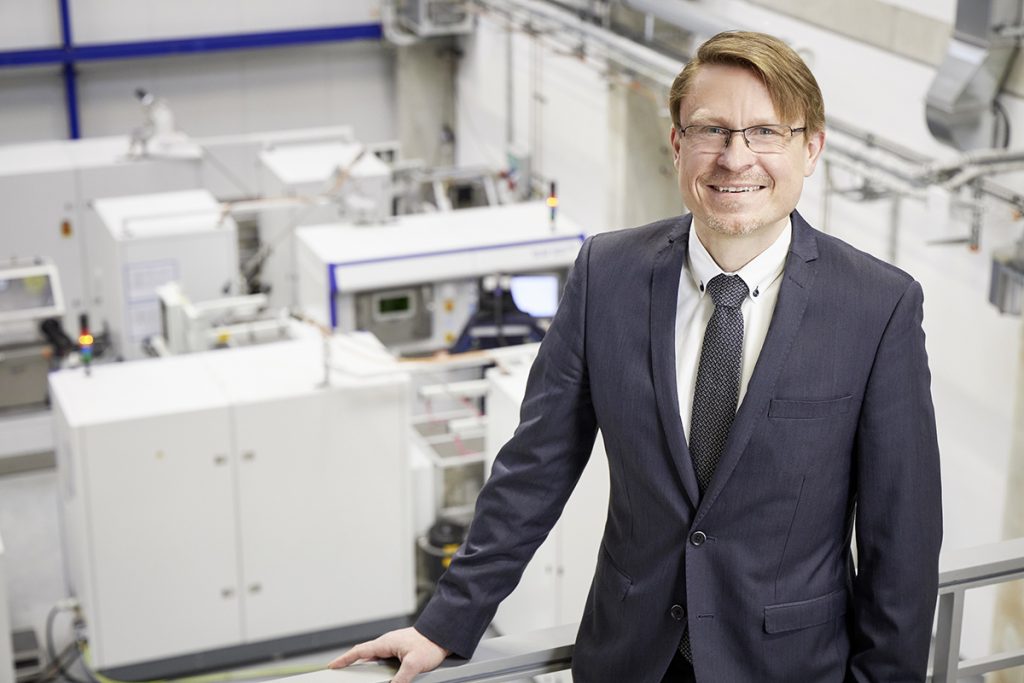
In addition to the benefits of centralisation on the company’s inner workings, Uckelmann has stated another key focus of research conducted within the centre will be exploring ways to improve the sustainability of the metal AM workflow. “Metal AM has established itself as a powerful manufacturing solution, but our industry needs to continue to increase our efforts to make the AM process itself more sustainable. At the new Metal Competence Center, we will explore opportunities to optimise printing processes, improve energy efficiency and more consistently recover and reuse metal powder to create more sustainable technologies.”
“This sustainability begins in the building itself,” he noted. “The facility includes high-efficiency insulation, reducing environmental impact from heating and cooling; and with renewable energy from rooftop solar panels, much of the energy that powers and heats the building is already carbon neutral.”
From the 1990s to COVID-19: How the history of Materialise mirrors the evolution of AM
While Materialise is, perhaps, best known for its benchmark Additive Manufacturing software offerings, it is due to its founders’ desire to start a manufacturing business that it first entered the field of software. In 1990, company founders Wilfried and Hilde Vancraen encountered the emerging technology of polymer Additive Manufacturing for the first time at a facility in Bremen. Soon after, the couple pooled their savings to acquire one polymer machine and, thus, Materialise was founded. Having installed the machine in a small office in Belgium, much of the company’s early life was spent trying to overcome the technological challenges of early Additive Manufacturing in order to begin manufacturing parts for customers. At this stage, it was extremely difficult for AM machines to read the computer files containing the design information for the components waiting to be built.
In response to this early challenge, Materialise developed its first software product: Materialise Magics. This data preparation software, developed by then-student Johan Pauwels (now the company’s executive vice president), enabled Materialise to transform digital 3D files into a format which AM machines were able to work from, as well as implementing features such as support generation to optimise designs for manufacturing. The company was now able to pursue its ambitious manufacturing plans with the help of its first ‘official’ employee, Philip Schiettecatte, now a Senior AM Engineering Consultant.
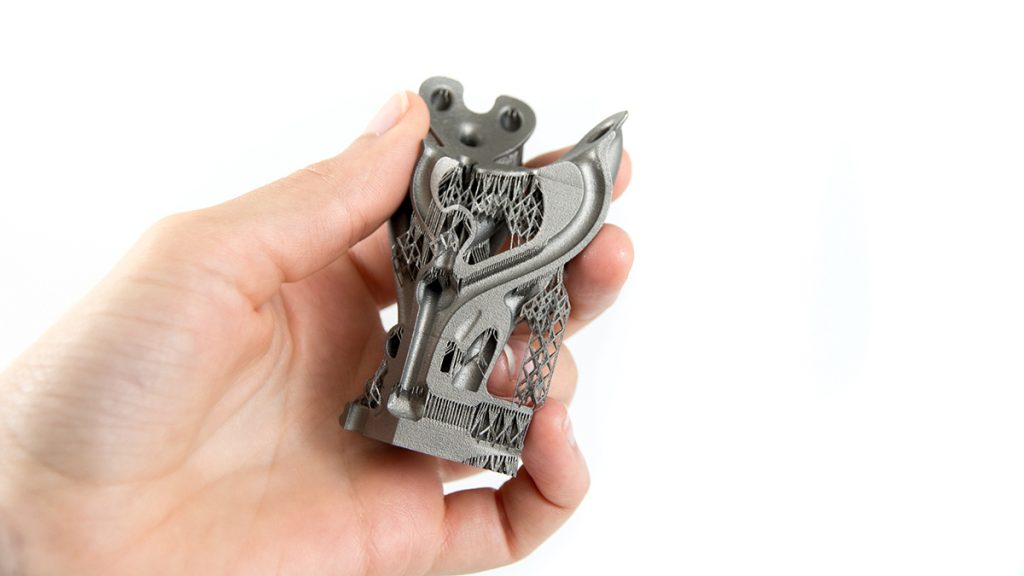
One of the company’s first projects was based on Wilfried Vancraen’s identification of the medical industry as a potentially lucrative field for AM technology: patient-specific anatomical models, based on CT scans. Early experiments in this area by Bart Van der Schueren, then a research assistant at the University of Leuven and now CTO of Materialise, led to the creation of Materialise Mimics. From anatomical models, the company’s applications in the medical sector progressed to surgical guides, drill guides, custom parts for hearing aids and more, including entrance into the dental field.
Materialise went on to expand into other fields of application for polymer AM with items such as silicone moulds for vacuum casting and sophisticated end-use products like lamps, furniture and sculptures. When, in 2006, the company began producing polymer prototype tooling for the automotive industry, they were faced with another unique challenge: how to get these parts to their destinations without the parts deforming en route. This was countered by the development of additively manufactured jigs and fixtures to hold the parts in place, and which could be adapted to each build. This solution evolved to become RapidFit, which now combines these jigs and fixtures in one standardised system used for quality testing in the automotive sector.
The move to metal
Following its acquisition of OBL, a company specialised in the creation of custom craniomaxillofacial (CMF) implants, in 2006, Materialise entered into the metal AM market with the manufacture of titanium CMF implants, which enable surgeons to achieve a more anatomically-correct result than with a standard implant. To this day, the production of these implants is one of the most recognisable success stories for metal AM; due to their porous structure, made possible only by AM’s freedom of design, these implants behave like natural bone, mimic its mechanical and thermal properties, and encourage osseointegration (bone ingrowth), significantly increasing the level of comfort for the patients who have them.
The company soon began production of orthopaedic implants made using the same technique. Materialise’s aMace implants became another recognisable success story; bespoke hip implants fit the patient’s anatomy exactly and are designed with the same bone ingrowth-promoting surface structure as its CMF implants.
A period of rapid innovation
Between 2006 and 2014, Materialise went from strength to strength in both its software and manufacturing offerings, with developments in the ensuing years including, but not limited to, the launch of i.materialise, an online platform which enabled users to create, share, and sell designs; working with Dutch fashion designer Iris van Herpen to produce one of the first polymer AM fashion pieces to appear on a runway; developing the Materialise Build Processor, which enables different AM machines to link directly through Materialise Magics; producing the surgical guides and anatomical models to be used by Prof Philip Blondeel at the University Hospital of Ghent in the first full face transplant in Belgium; and the launch of Materialise Streamics for quality control, traceability and automation on the AM factory floor.
Consolidating its position
The company joined the stock market with its IPO on NASDAQ on June 25, 2014, enabling it to expand its services, reach a wider range of customers and further contribute to the growth of the AM industry as a whole. In 2015, having achieved the EN9100/AS9100 and EASA.21G certifications, in addition to its existing ISO 9001 certification, it was authorised to offer manufacturing services in the aviation market. From here, the company began delivery of end-use AM parts to customers such as Airbus, helping to reduce the weight and operational costs of aircraft.
By 2015, while polymer Additive Manufacturing was experiencing something of a post-hype slump, metal Additive Manufacturing was starting to come into its own as a prototyping and small-series production technology. Following demand from its customers, Materialise expanded its metal AM offering beyond its titanium medical implants, adding aluminium to its materials offering. Led by Ingo Uckelmann, the company opened its first Metal Competence Center in Bremen, Germany, in September 2015, where it incorporated all of its metal AM activities. The company’s knowledge base had been centralised in Bremen since the acquisition of Marcam Engineering four years earlier.
By this point, Materialise had become one of the world’s largest providers of Additive Manufacturing services with a global capacity of more than 120 polymer and metal AM machines and use of a wide variety of technologies. At the time of the competence centre’s launch, the company stated that it was producing and shipping more than 2,000 parts daily to a global list of customers. The metal production facility in Bremen was its fourth industrial production unit in Europe, joining the factory at its Belgium headquarters and those in Poland and the Czech Republic.
Software innovation that rises to the challenge of AM
In 2015, with an ever-growing focus on process and quality control, the company integrated the Materialise Control Platform into its services. This software-driven hardware solution is embedded inside metal AM machines and offers the user a higher degree of control over machine parameters and performance. In 2017, Materialise e-Stage became the first software in the world to automate support generation for titanium, stainless steel and aluminium AM parts. Based on a powerful automation algorithm, e-Stage for metal reduced data preparation time for metal builds by up to 90%, and finishing time by up to 50%, offering metal AM users a dramatic increase in productivity. Additionally, this positively benefited the working conditions of the machine operators, since hardly any powder is captured inside the optimised supports.
In the same year, the acquisition of ACTech brought together Materialise’s metal AM competence with the German-based company’s expertise in the production of limited runs of highly-complex metal parts. This acquisition also enabled Materialise to continue to develop and improve its metal AM software suite, taking advantage of learning from an active metal manufacturing environment.
Based on Materialise’s innovative track record, BASF, the world’s largest chemical producer, invested $25 million in the company as part of a strategic alliance to identify and develop new applications. Later that same year, 2018, an updated release of Materialise Magics brought the integrated Simulation module to the AM market. This new technology made process simulation accessible to a wider audience, helping production operators to optimise the build process without the need for expert knowledge. The Simulation module also presented an opportunity for production operators to optimise their machine’s operations and get builds right the first time, raising their overall productivity and making it possible to scale up their operations; an important prospect for the wider industrialisation of AM.
In that same year, a productive one for Materialise, the company helped to produce the COSMOS eyewear collection by Berlin-based designer fmhofmann, the first to combine a titanium additively manufactured hinge with polymer AM PA frames; a further partnership between Materialise, designer Sébastien Brusset and L’Amy led to the production of a new eyewear range for automotive brand McLaren named ‘Frame Technological Innovation’ of the year at the 2018 Silmo d’Or Awards, a showcase of eyewear brands and manufacturers, in Paris.
Engimplan and Materialise partnered in 2019 with the aim of bringing the benefits of custom, metal additively manufactured implants and instruments to Brazilian patients. For over a decade, the company’s metal AM solutions had been showing proven results in the operating theatre and in post-surgical patient recovery, and had truly set the bar for the application of metal Additive Manufacturing in the medical sector.
Conclusion
In 2020, with the outbreak of COVID-19, many AM companies turned their expertise toward the development of solutions to aid in the fight against the virus. In line with the company’s proven ability to leverage AM’s unique qualities, Materialise quickly developed a range of new, potentially life-saving solutions, ranging from hands-free door openers to personal protective equipment and ventilator components.
In speaking to Uckelmann and understanding this long history, it becomes clear that the advancements offered by Materialise’s new Metal Competence Center reflect a culture of continuous improvement at a company which has invested years of research and millions of dollars in improving Additive Manufacturing since its earliest days. Since its founding in 1990, Materialise has worked to create a better Additive Manufacturing process through software and manufacturing expertise, addressing challenges and creating solutions which have gone some way to shaping the AM industry as we now know it, as well as bringing significant benefits to its customer markets.
Author
Emily-Jo Hopson-VandenBos
Deputy Editor & Features Writer
Metal AM magazine
[email protected]
Contact
Materialise HQ
Technologielaan 15
3001 Leuven
Belgium
[email protected]
[email protected]
Tel: +32 16 39 66 11
Materialise in the serial production of bike parts for Pinarello at its Bremen Metal Competence Center
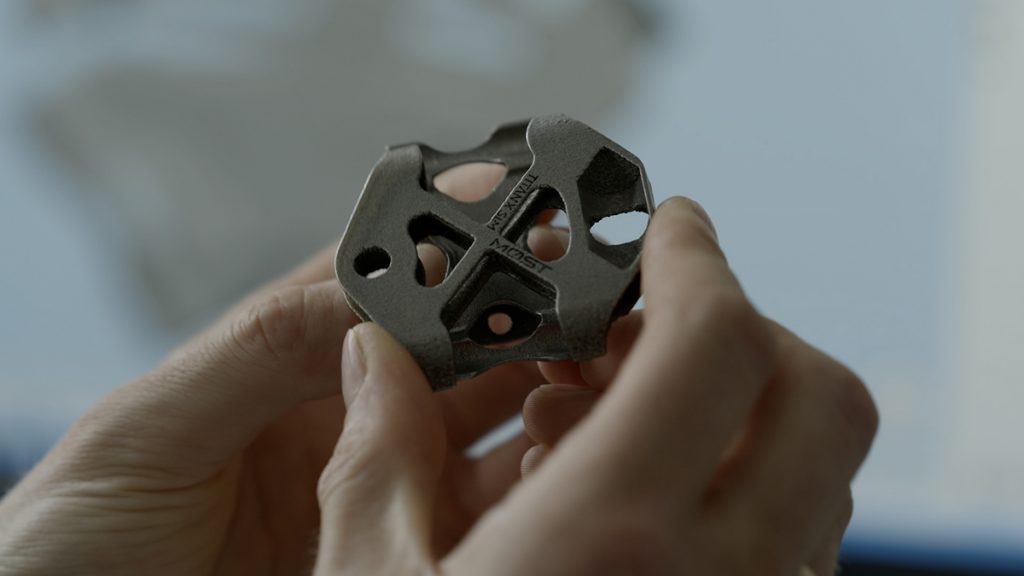
Recently, Materialise collaborated with Italian performance bicycle brand Pinarello to design and produce new metal additively manufactured frameset hardware, reducing the weight of the seat clamp by 35 g. The Pinarello bicycle seat clamps were produced at Materialise’s new Metal Competence Center in Bremen. (Images Courtesy Materialise)
